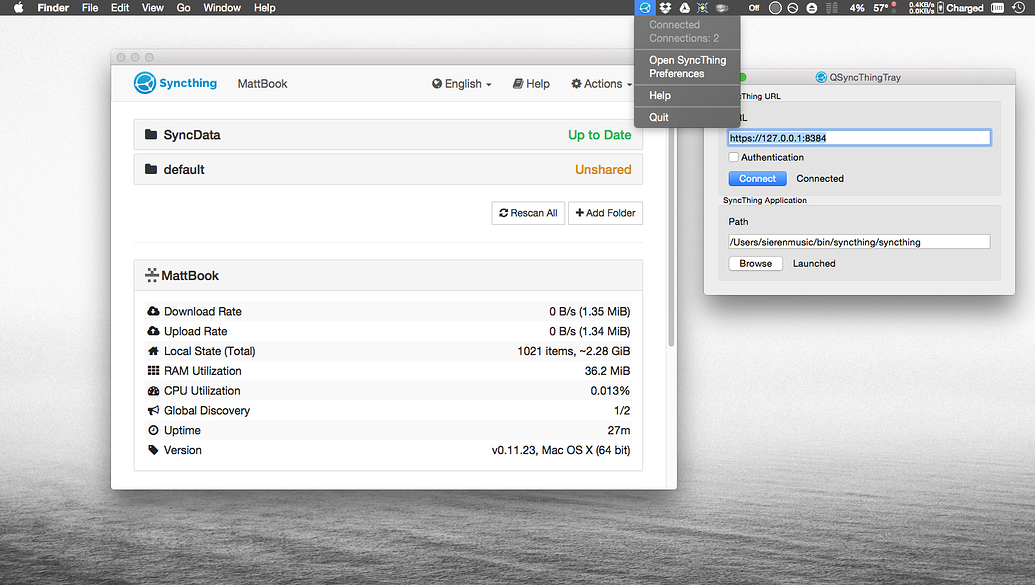


#SYNCTHING COMPRESSION INSTALL#
To install the latest version, run these commands on the remote server: sudo apt install curl apt-transport-httpsĮcho "deb syncthing release" | sudo tee /etc/apt//syncthing.listĭouble check with: syncthing -version syncthing locally I will show here the commands you need to set up syncthing on a Ubuntu server, so these may differ if you use another Linux distro. We are going to use an SSH tunnel for the synchronization so to keep things secure.
#SYNCTHING COMPRESSION FREE#
To implement the active two way sync I am using syncthing, a free and open source alternative to services like Dropbox and Google Drive which does not require a central server and also offers a handy command line version which suits our needs perfectly. File synchronization between a local directory and a remote container This workaround consists of a two way synchronization between the local directory and the remote container, in a very similar way to what recent builds of Docker (for Intel Macs) do behind the scenes. I found a workaround for this, which involves a very little setup but works pretty well, offering an experience as much similar to the normal Docker experience as possible while we wait for native Docker support for M1 Macs. So any changes we make to local files won't be reflected in the remote container. This is expected, because of course the Docker engine is on another computer and any path we specify as the origin path for the bind mount is interpreted by Docker as a path on the remote server. What will NOT work out of the box is bind mounts for volumes, which we usually use to have a "live" link from a container to a local folder for development. So to use our remote Docker engine all we need to do is set the DOCKER_HOST environment variable to the location of that Docker instance: export can add this to your shell's config and you are good to go. If you try any Docker commands after this you will only get errors, which is expected. (You likely need to use the version of brew installed under Rosetta). While the Docker engine doesn't work on M1, the Docker CLI does, you can install it e.g. The only requirement is that it has Docker installed. This is pretty easy to do and all you need is a Linux machine somewhere I use a Hetzner Cloud VPS (referral link, we both receive credits) for this - it's very cheap and I can use a VPS in the Helsinki data center, so the latency is minimal for me) but you can use any Linux server. Luckily there is another option we can use as workaround for now, and that option is a remote Docker engine. I did try that solution, but the VM was somehow unstable, resulting in frequent kernel panics so I couldn't actually work with it. Docker for Desktop cannot run on these Macs yet, but someone got Docker working in a virtual machine somehow. But this means that I had to find a workaround for Docker since I depend on it quite a bit.
#SYNCTHING COMPRESSION MAC#
I bought an M1 Mac Mini a week ago and couldn't be happier. If you already own a Mac powered by the new M1 SoC designed by Apple ("Apple silicon"), or are interested in getting one, you probably know by now that Docker doesn't work on these machines yet, nor does virtualization in general (Docker is a Linux technology of course, so it requires virtualization to run on other operating systems).


 0 kommentar(er)
0 kommentar(er)
